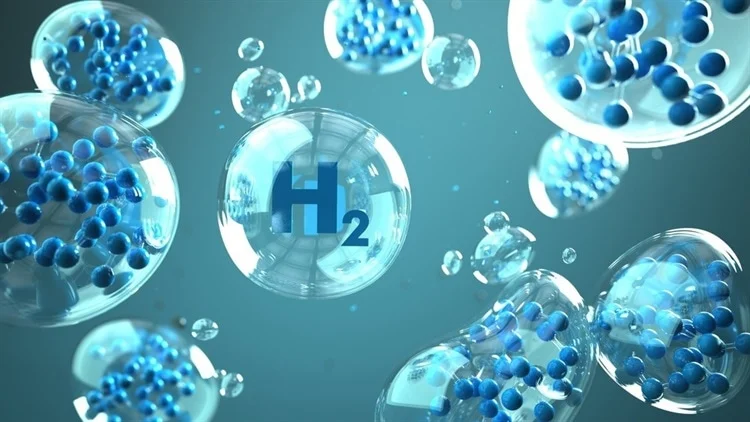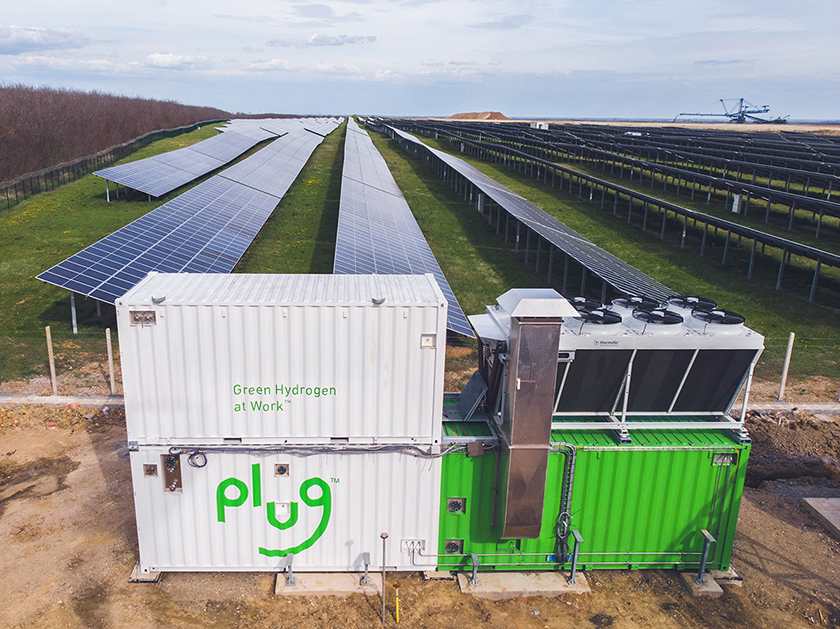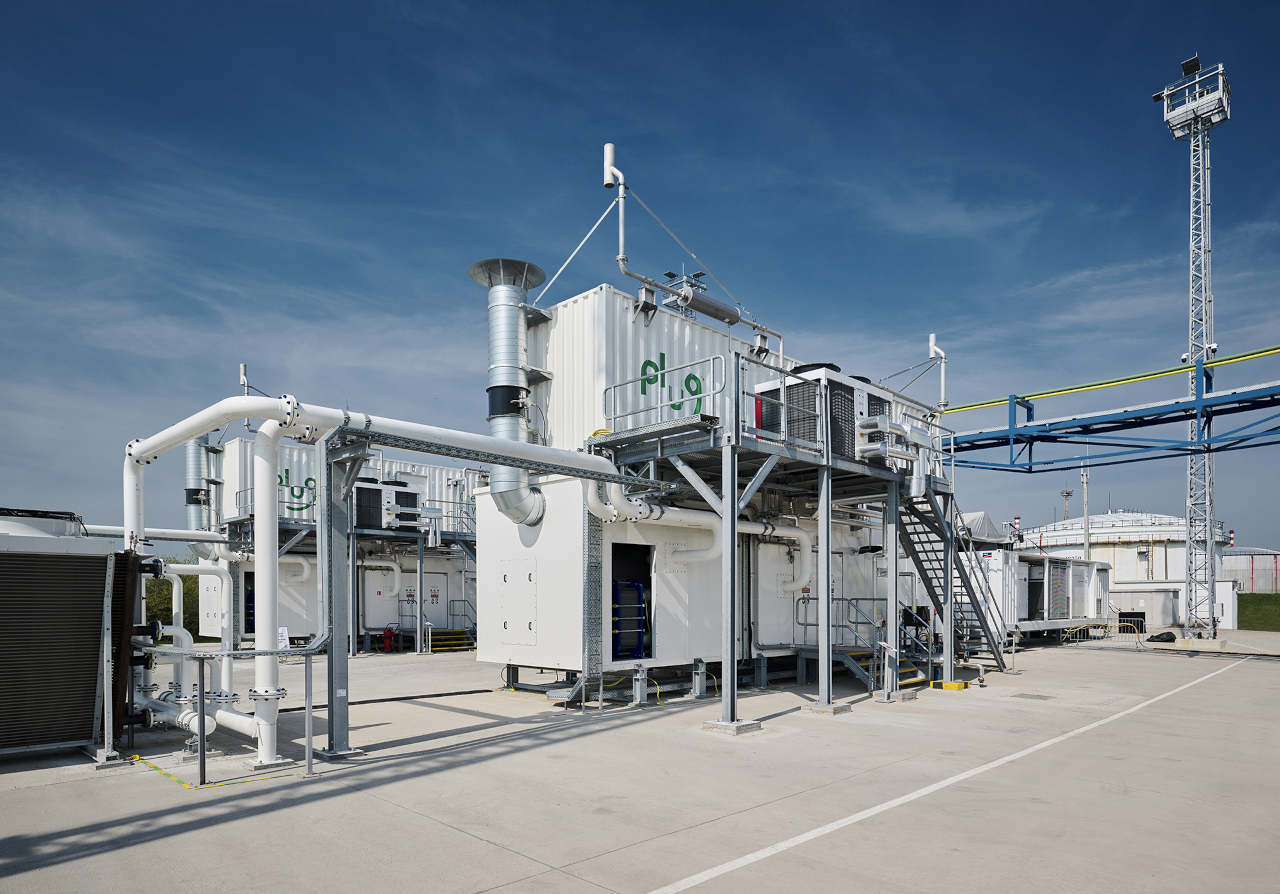Contents
- 1 Harnessing Nature’s Power for Clean Hydrogen Production
- 2 Prof. Aécio D’Silva, Ph.D AquaUniversity
- 3 Unlock the potential of renewable energy to create sustainable hydrogen fuel
- 4
- 5 What Are Green Hydrogen Electrolyzers?
- 6 How Do Green Hydrogen Electrolyzers Work?
- 7 Main Types of Hydrogen Electrolyzers
- 8
- 9 How does the efficiency of green hydrogen electrolyzers compare to traditional methods
- 10
- 11 What advancements are being made to improve the efficiency of green hydrogen electrolyzers?
- 12 What are the environmental benefits of using solar and wind energy for hydrogen production?
- 13 What is electrocoagulation and how do incorporating electrocoagulation, and green hydrogen production facilities increase its efficiency-lucrative?
- 14 How does the incorporation of electrocoagulation improve the environmental sustainability of hydrogen production
- 15 Conclusion
Harnessing Nature’s Power for Clean Hydrogen Production
Prof. Aécio D’Silva, Ph.D
AquaUniversity
Unlock the potential of renewable energy to create sustainable hydrogen fuel
Green hydrogen electrolyzers powered by solar and wind energy represent a groundbreaking approach to clean energy production. This innovative technology harnesses the power of renewable sources to split water molecules, producing hydrogen fuel without harmful emissions. As the world seeks sustainable alternatives to fossil fuels, green hydrogen emerges as a promising solution for various industries and applications.
What Are Green Hydrogen Electrolyzers?
Green hydrogen electrolyzers are devices that use electricity from renewable sources like solar and wind to split water (H2O) into hydrogen (H2) and oxygen (O2) through electrolysis. This method produces hydrogen fuel without generating carbon emissions, making it a clean and sustainable energy carrier.
How Do Green Hydrogen Electrolyzers Work?
The process begins with electricity generated from solar panels or wind turbines. This renewable energy powers the electrolyzer, which consists of two electrodes submerged in water. When an electric current passes through the water, it breaks the chemical bonds, separating hydrogen from oxygen. The hydrogen is then collected and stored for various applications.
Main Types of Hydrogen Electrolyzers
Alkaline Electrolyzers
Alkaline electrolyzers use a liquid alkaline solution as an electrolyte. They are the most mature and cost-effective technology, suitable for large-scale applications
Proton Exchange Membrane (PEM) Electrolyzers
PEM electrolyzers use a solid polymer electrolyte. They offer high efficiency, compact design, and rapid response times, making them ideal for integrating with variable renewable energy sources
Solid Oxide Electrolyzers
Solid oxide electrolyzers operate at high temperatures and offer the highest electrical efficiency. They are still in the early stages of commercialization but show promise for large-scale hydrogen production.
Cost-Effectiveness of Electrolyzers
As technology advances and production scales up, electrolyzer costs decrease. Integrating them with renewable energy sources reduces operational costs, making green hydrogen increasingly competitive with fossil fuel-derived hydrogen.
Practical Applications of Green Hydrogen
Green hydrogen has diverse applications across multiple sectors:
- Transportation: Fuel for hydrogen vehicles, particularly long-haul trucks and buses
- Industry: Raw material for chemical processes and steel production
- Energy Storage: Long-term storage of renewable energy
- Heating: Clean alternative to natural gas for residential and industrial heating
Challenges and Solutions
While promising, green hydrogen electrolyzers face several challenges:
- High Production Costs: Ongoing research and economies of scale are driving costs down
- Infrastructure: Investments in hydrogen distribution networks are increasing
- Efficiency: Technological improvements are enhancing overall system efficiency
- Water Usage: Developing seawater electrolysis and water recycling systems addresses this concern.
Green hydrogen electrolyzers powered by solar and wind energy represent a significant step towards a sustainable energy future. As technology advances and costs decrease, we can expect to see wider adoption of this clean energy solution across various industries, contributing to global decarbonization efforts.
How does the efficiency of green hydrogen electrolyzers compare to traditional methods
Green hydrogen electrolyzers powered by renewable energy sources like solar and wind offer significant efficiency advantages compared to traditional hydrogen production methods:
Efficiency Comparison
Electrolysis vs. Steam Methane Reforming
Traditional hydrogen production via steam methane reforming (SMR) of natural gas typically requires about 44.5 kWh of energy per kg of hydrogen produced. In contrast, electrolysis requires around 50 kWh/kg H2. While electrolysis appears slightly more energy-intensive, it has two key advantages:
- It uses renewable electricity, avoiding fossil fuel consumption and emissions.
- Electrolysis efficiency is improving rapidly with technological advances.
High-Temperature Electrolysis
High-temperature electrolysis (HTE) offers even greater efficiency gains:
- HTE requires less electrical energy compared to low-temperature electrolysis.
- The U.S. Department of Energy notes that HTE results in “very high electrical efficiencies” and potential for low-cost hydrogen production when using waste heat or low-cost thermal energy.
Efficiency Improvements
Several factors are driving increased efficiency in green hydrogen electrolyzers:
- Temperature: A 2017 study found that water electrolysis efficiency increased by about 17% at 350°C/100 bars compared to 80°C/1 bar.
- Electrolyzer Technology: Different types offer varying efficiencies:
- Solid Oxide Electrolyzers (SOECs) are considered the most efficient, though they require very high operating temperatures.
- Proton Exchange Membrane (PEM) and Alkaline electrolyzers are becoming more efficient with ongoing research and development.
- Integration with Renewables: Coupling electrolyzers directly with solar and wind power improves overall system efficiency by reducing transmission losses.
Environmental Impact
The efficiency of green hydrogen electrolyzers translates to significant environmental benefits:
- Hydrogen powered by offshore wind can reduce greenhouse gas emissions by 93-97% compared to grey hydrogen (from fossil fuels).
- Solar PV-powered hydrogen production can reduce emissions by 62-85% compared to grey hydrogen.
Future Outlook
As technology advances and production scales up, the efficiency and cost-effectiveness of green hydrogen electrolyzers are expected to improve further:
- Electrolyzer costs could decrease by 40% in the short term and up to 80% in the long term.
- Green hydrogen production costs could fall below $2 per kilogram within a decade, making it competitive with fossil fuel-derived hydrogen.
While green hydrogen electrolyzers may currently require slightly more energy input than traditional SMR, their rapidly improving efficiency, coupled with the use of renewable energy sources, makes them a far more sustainable and environmentally friendly option for hydrogen production.
What advancements are being made to improve the efficiency of green hydrogen electrolyzers?
Several key advancements are being made to improve the efficiency of green hydrogen electrolyzers:
Emerging Technologies
E-TAC Process
Researchers at the Technion–Israel Institute of Technology have developed a novel electrolysis process called E-TAC (electrochemical and thermally activated chemical):
- Eliminates the need for membranes by producing hydrogen and oxygen at different stages.
- Reduces complexity and costs while enhancing efficiency and scalability.
Photoelectrode Modules
Researchers at the Ulsan National Institute of Science and Technology (UNIST) have developed scalable and efficient photoelectrode modules:
- Use sunlight to directly split water into hydrogen and oxygen.
- Offer a promising approach to making green hydrogen production more competitive and accessible.
These advancements are driving the efficiency and cost-effectiveness of green hydrogen electrolyzers, making them increasingly viable for large-scale hydrogen production. As research continues and technologies mature, we can expect further improvements in electrolyzer efficiency, bringing green hydrogen closer to widespread adoption as a clean energy carrier.
What are the environmental benefits of using solar and wind energy for hydrogen production?
Using solar and wind energy for hydrogen production through electrolysis offers significant environmental benefits compared to traditional hydrogen production methods:
Greenhouse Gas Reduction
Green hydrogen produced using renewable energy sources dramatically reduces greenhouse gas emissions:
- Hydrogen-powered by offshore wind results in a 93-97% reduction in greenhouse gas (GHG) footprint compared to grey hydrogen (produced from fossil fuels)..
- Solar PV-powered hydrogen production achieves a 62-85% reduction in GHG emissions compared to grey hydrogen. These reductions are substantial, especially when compared to blue hydrogen (produced from natural gas with carbon capture):
- Offshore wind-powered hydrogen reduces emissions by 76-94% compared to blue hydrogen..
- Solar-powered hydrogen production is comparable to or better than blue hydrogen in terms of emissions reduction.
Clean Energy Integration
The use of solar and wind energy for hydrogen production allows for better integration of renewable energy sources:
- Electrolyzers can utilize surplus renewable energy that might otherwise be curtailed, improving overall system efficiency..
- The Wind2H2 project demonstrates how variable renewable energy from wind turbines and PV arrays can be directly used for hydrogen production.
Water Conservation and Treatment
Green hydrogen production can be coupled with water treatment technologies:
- Surplus energy from renewable sources can be used for electrocoagulation (EC), an environmentally friendly method for treating wastewater.
- This integration improves sustainability by addressing water demand and freshwater supply issues.
Energy Storage and Grid Stability
Hydrogen production through electrolysis offers additional benefits for energy systems:
- Electrolyzers can be used for longer-term energy storage, producing hydrogen that can be stored in pressurized vessels for later use.
- This storage capability helps address the intermittency issues associated with solar and wind energy, contributing to grid stability.
Versatility and Scalability
Green hydrogen production systems using solar and wind energy are versatile and scalable:
- They can be designed for various applications, from small-scale operations to large industrial facilities.
- The technology can be adapted to different geographical locations, taking advantage of local renewable energy resources.
By leveraging solar and wind energy for hydrogen production, we can significantly reduce the environmental impact of hydrogen as an energy carrier while simultaneously addressing challenges related to renewable energy integration and storage. This approach represents a crucial step towards a more sustainable and cleaner energy future.
What is electrocoagulation and how do incorporating electrocoagulation, and green hydrogen production facilities increase its efficiency-lucrative?
Electrocoagulation (EC) is an advanced water treatment technology or electrolytic process that uses electricity and sacrificial electrodes to remove contaminants from water and wastewater. Here’s an overview of how incorporating electrocoagulation with hydrogen production facilities can increase efficiency and cost-effectiveness:
Electrocoagulation Process: Electrocoagulation involves
- Applying an electric current to metal electrodes (usually aluminum or iron) submerged in contaminated water
- The electrodes corrode, releasing metal ions into the water
- These ions form coagulants that bind to and neutralize contaminants
- Contaminants are removed as flocs that can be easily separated from the water
Understanding Electrocoagulation
Electrocoagulation is an advanced water treatment method that combines the principles of electrochemistry and coagulation. At its core, EC utilizes electrical current to remove various pollutants from water, including:
- Emulsified oils
- Suspended solids
- Dissolved metals
- Organic compounds
- Colloidal particles
This versatility has propelled electrocoagulation to the forefront of water treatment technologies, making it one of the fastest-growing solutions in the industry.
The Basic Principle
The electrocoagulation process involves several key components:
- An electrochemical cell
- Sacrificial electrodes (usually made of iron or aluminum)
- A power source
- The contaminated water
When an electric current is applied, the sacrificial electrodes release ions into the water. These ions act as coagulating agents, destabilizing contaminants and allowing them to form larger, more easily removable particles.
Integration with Hydrogen Production
Combining electrocoagulation with hydrogen production facilities offers several synergistic benefits:
Efficient Use of Electricity
- Surplus renewable energy from solar or wind used for hydrogen production can power the EC process
- This improves overall energy utilization and reduces operational costs
Water Treatment and Reuse
- EC can treat wastewater from hydrogen production processes
- Treated water can be reused in the hydrogen production facility, reducing freshwater consumption
Hydrogen Gas Utilization
- Hydrogen gas produced as a byproduct of EC can be captured and used
- This adds value to the EC process and improves overall system efficiency
Enhanced Sustainability
Integrating EC with hydrogen production improves environmental performance:
- Reduced chemical usage compared to traditional water treatment methods
- Lower greenhouse gas emissions when powered by renewable energy
- Improved water management and conservation
Economic Benefits
The integration can lead to cost savings and new revenue streams:
- Reduced water treatment and disposal costs
- Potential sale of treated water or recovered materials
- Value added from hydrogen gas production
By combining electrocoagulation with hydrogen production facilities, operators can create a more efficient, sustainable, and economically viable system for both water treatment and clean energy production.
How does the incorporation of electrocoagulation improve the environmental sustainability of hydrogen production
The incorporation of electrocoagulation (EC) into hydrogen production systems offers several environmental sustainability benefits:
Water Treatment and Conservation
Electrocoagulation provides an environmentally friendly method for treating wastewater:
- It allows the system to utilize and treat discharged wastewater, addressing water demand and freshwater supply issues.
- This is especially beneficial when electricity for EC comes from renewable energy sources, further enhancing sustainability.
Efficient Use of Surplus Energy
The integration of EC with hydrogen production allows for better utilization of renewable energy:
- Surplus electricity from the renewable energy sources powering hydrogen production can be used for the EC process.
- This improves overall system efficiency by making use of energy that might otherwise be wasted.
Reduced Chemical Usage
Electrocoagulation offers advantages over traditional water treatment methods:
- It requires fewer or no chemical additives compared to conventional coagulation processes.
- This reduces the environmental impact associated with chemical production and transportation.
Circular Economy Approach
The integration of EC with hydrogen production creates a more circular system:
- Wastewater from industrial processes or hydrogen production itself can be treated and potentially reused.
- This closed-loop approach reduces overall water consumption and minimizes waste discharge.
Enhanced Sustainability Metrics
By incorporating EC, the hydrogen production facility improves its sustainability profile:
- The ability to treat and reuse water on-site reduces the facility’s water footprint.
- The efficient use of surplus renewable energy for water treatment improves overall energy efficiency metrics.
Localized Environmental Benefits
On-site water treatment through EC can have positive local environmental impacts:
- Reduced need for water transportation, lowering associated emissions and infrastructure requirements.
- Decreased discharge of untreated or partially treated wastewater into local water bodies.
By incorporating electrocoagulation, hydrogen production facilities can address multiple environmental challenges simultaneously, improving water management, energy efficiency, and overall sustainability. This integrated approach aligns well with the goals of creating more sustainable and environmentally friendly energy production systems.
Conclusion
As we stand on the brink of a clean energy revolution, green hydrogen electrolyzers powered by solar and wind energy emerge as a beacon of hope for a sustainable future. These innovative systems represent a crucial step towards decarbonizing our energy landscape and offer a viable solution to the intermittency challenges posed by renewable energy sources.
The synergy between renewable energy and hydrogen production through electrolysis is reshaping our approach to clean energy storage and distribution. By harnessing the power of the sun and wind to split water molecules, we’re not only producing a versatile, zero-emission fuel but also creating a flexible energy carrier that can be used across various sectors, from transportation to industry.
As technology advances and costs continue to decrease, green hydrogen is poised to play an increasingly significant role in our global energy mix. The integration of electrocoagulation techniques further enhances the efficiency and sustainability of these systems, addressing water treatment challenges and improving overall process effectiveness.
However, realizing the full potential of green hydrogen electrolyzers will require continued investment in research and development, supportive policies, and infrastructure expansion. As we move forward, collaboration between governments, industries, and research institutions will be crucial in overcoming the remaining hurdles and scaling up this promising technology.
The journey towards a hydrogen-powered future is well underway, and green hydrogen electrolyzers fueled by solar and wind energy are leading the charge. By embracing this technology, we’re not just powering the future – we’re safeguarding it for generations to come. As we continue to innovate and refine these systems, we edge closer to a world where clean, renewable energy is abundant, accessible, and sustainable for all.
References;
https://www.plugpower.com/hydrogen-electrolyzers-101-why-they-matter-for-sustainable-energy/
The Role of Electrolysis in Green Hydrogen Production – https://www.azocleantech.com/article.aspx?ArticleID=1795
The integration of wind and solar power to water electrolyzer for green hydrogen production-https://www.sciencedirect.com/science/article/abs/pii/S0360319924005548
The Rise of Green Hydrogen: Stats, Trends, and Future Projections – https://www.plugpower.com/the-rise-of-green-hydrogen-stats-trends-and-future-projections/
Off-grid solar-wind power plant design for green hydrogen generation – https://www.pv-magazine.com/2024/05/10/off-grid-solar-wind-power-plant-design-for-green-hydrogen-generation/
Ebba, M., Asaithambi, P. & Alemayehu, E. Investigation on operating parameters and cost using an electrocoagulation process for wastewater treatment. Appl Water Sci 11, 175 (2021). https://doi.org/10.1007/s13201-021-01517-y
Butler, E., Hung, Y., & Yeh, R. Y. (2011). Electrocoagulation in Wastewater Treatment. Water, 3(2), 495-525. https://doi.org/10.3390/w3020495
Electrocoagulation 101: How Does Electrocoagulation Work – https://blog.emew.com/electrocoagulation-101






